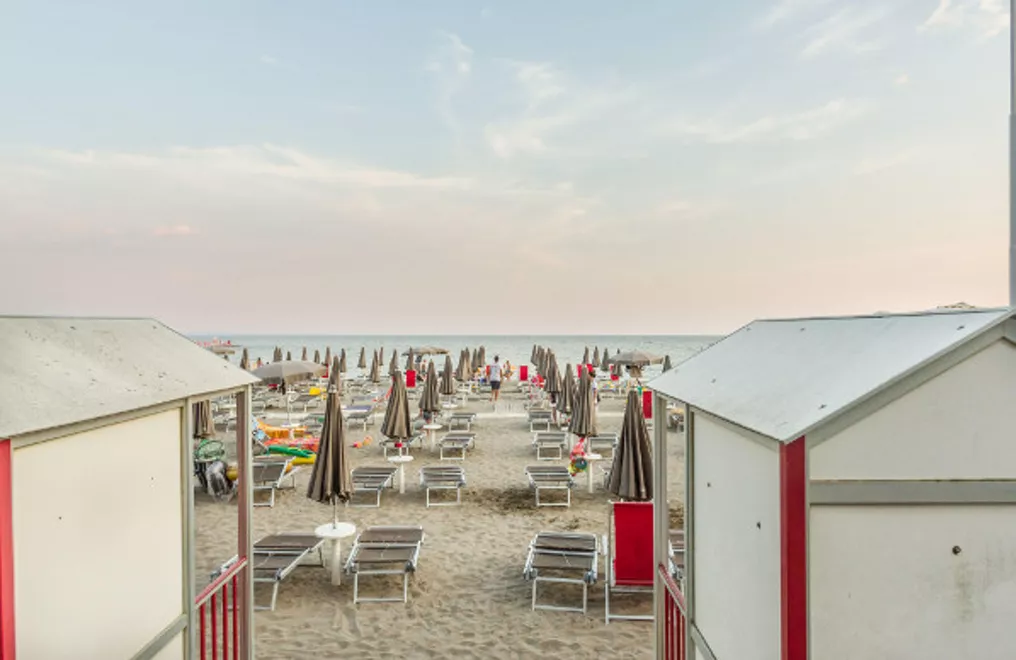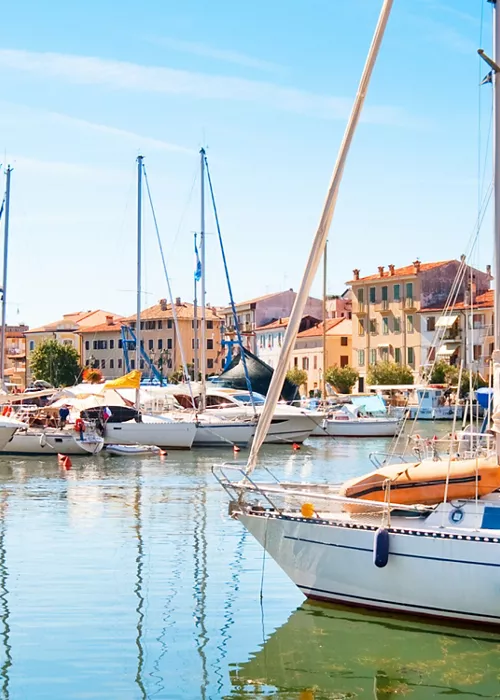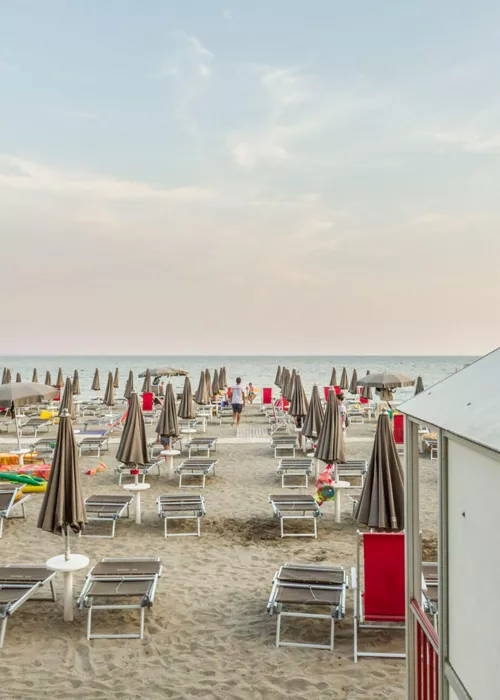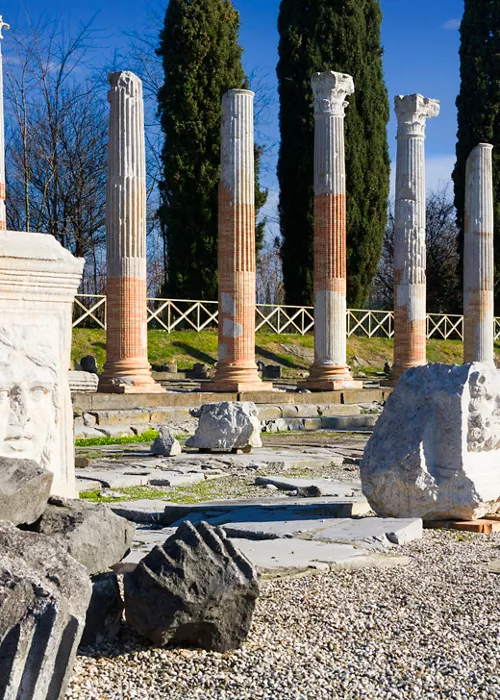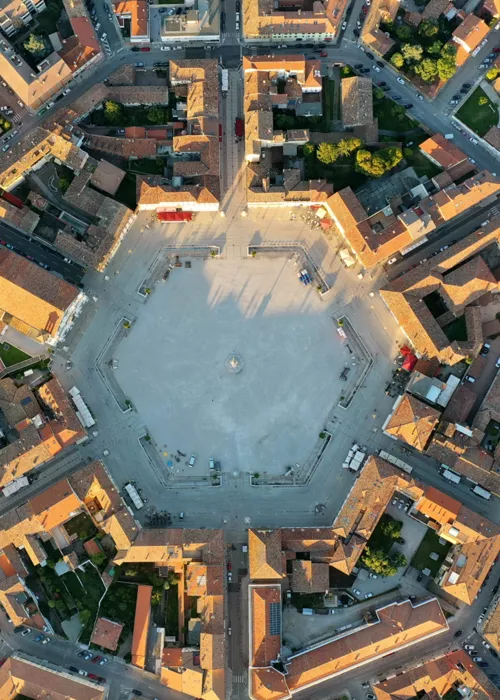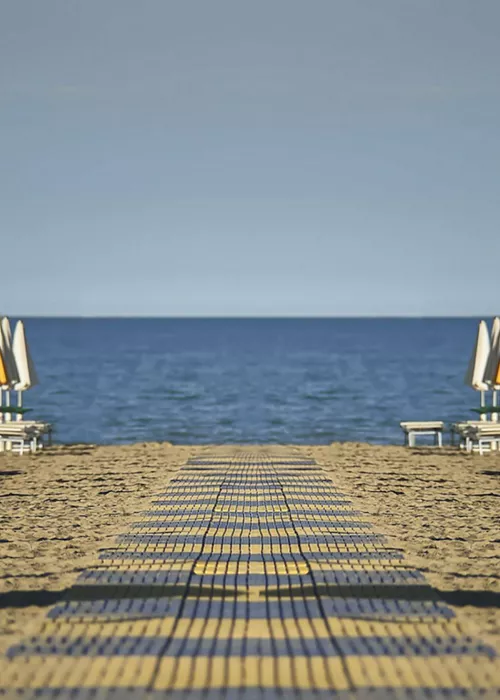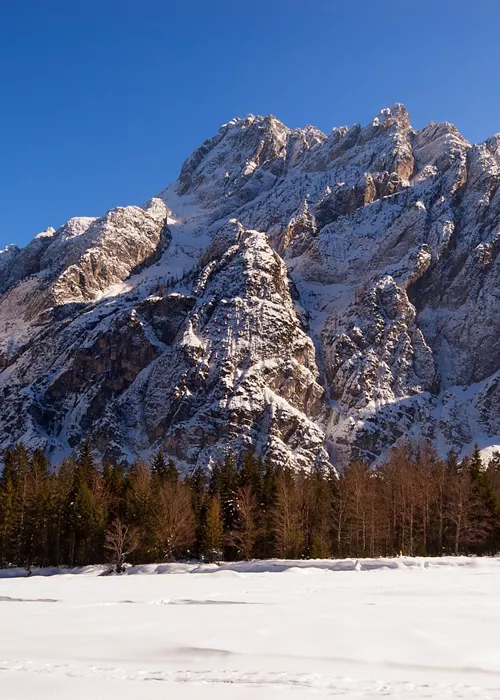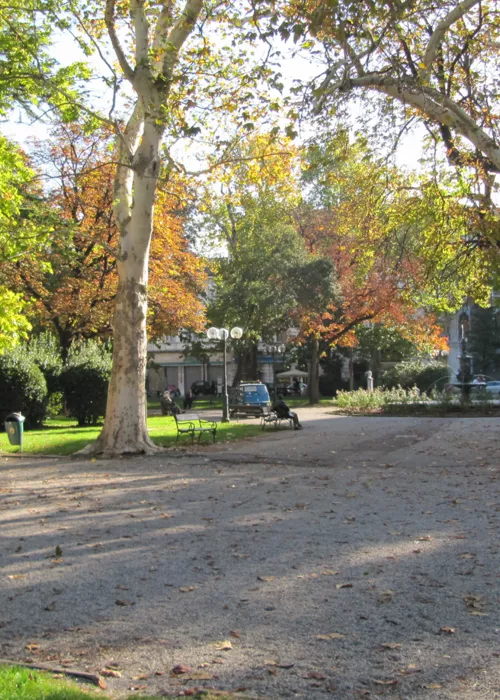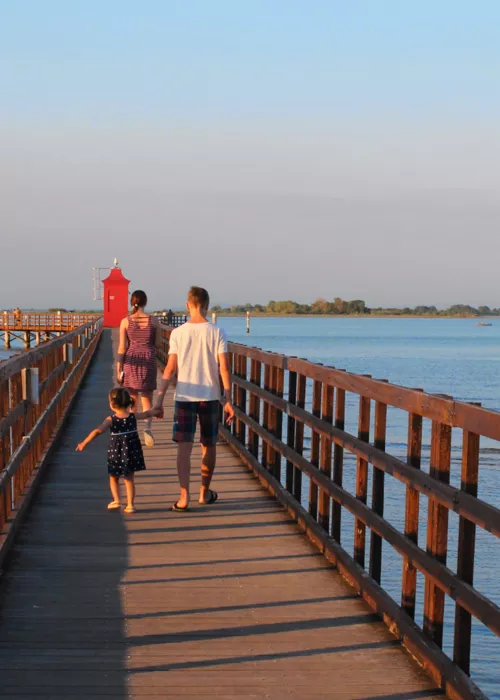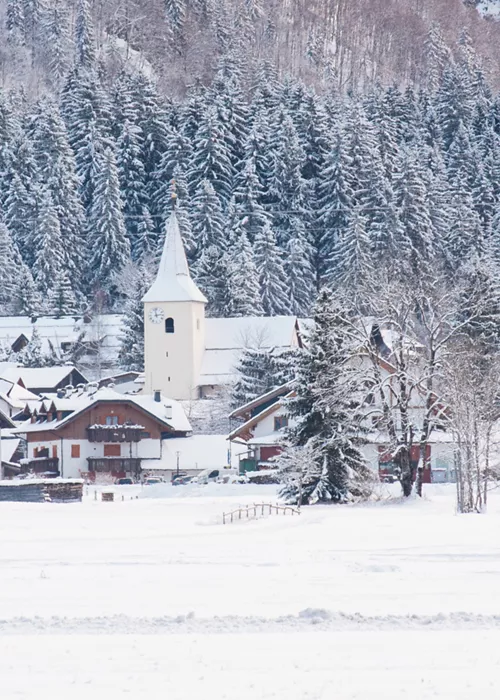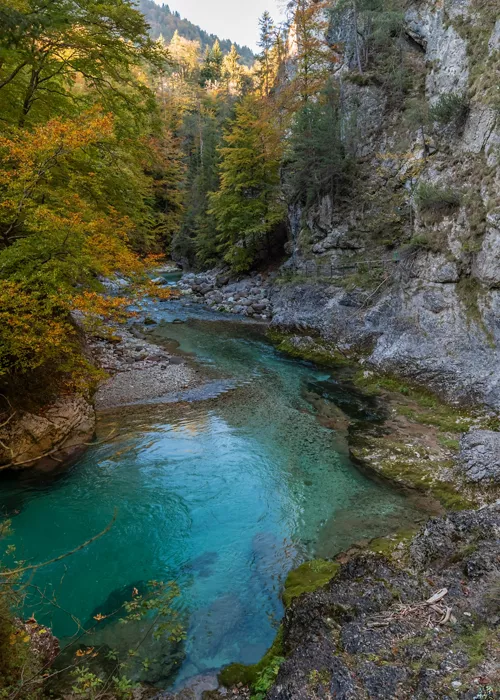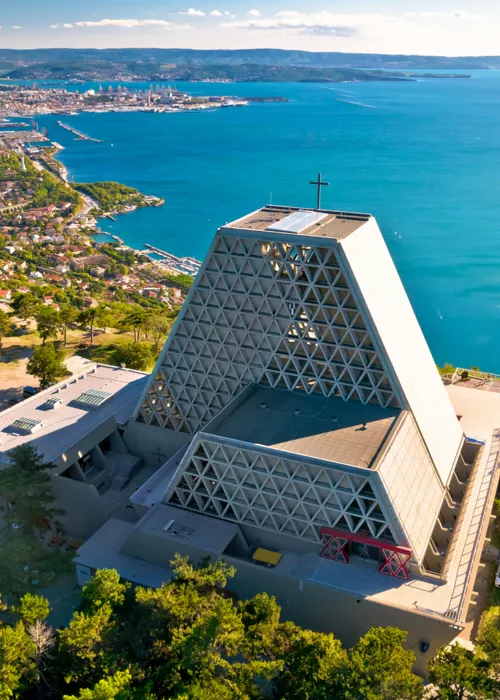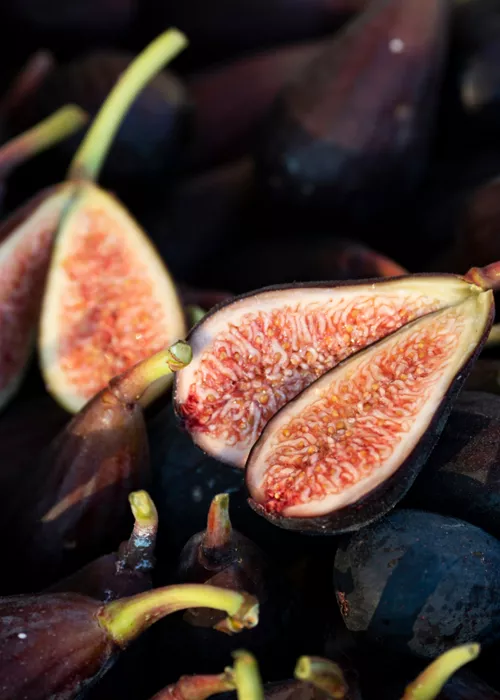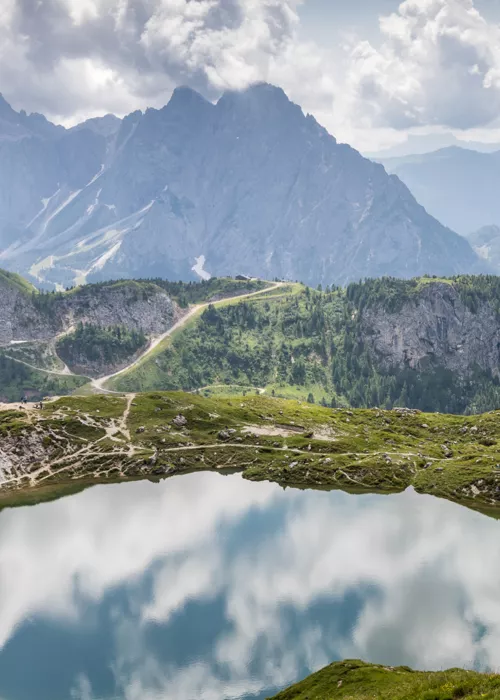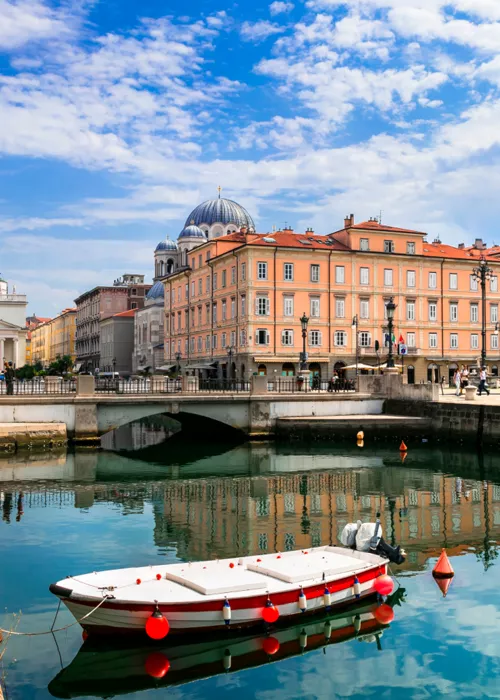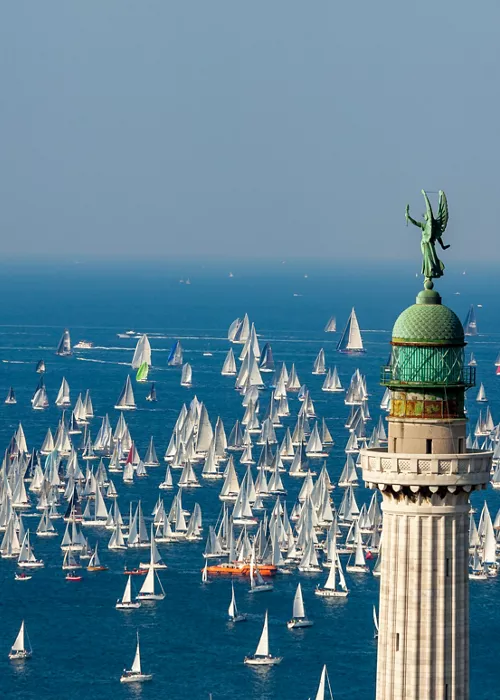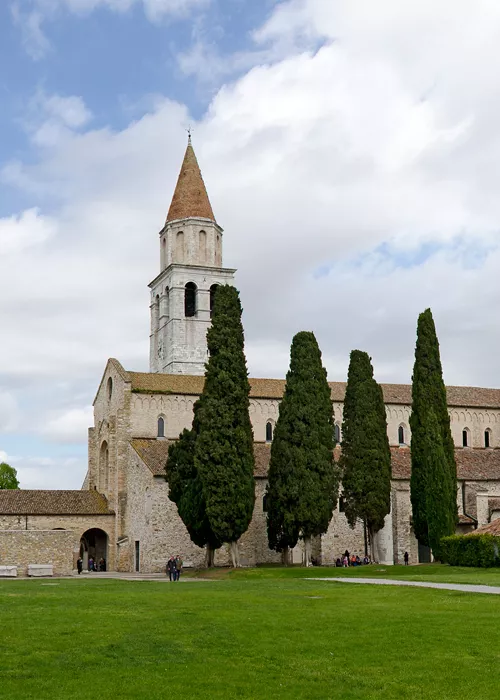Grado beach: sea, sun and an imperial climate
3 minutes
We are talking about the 10 kilometres of beach facing south, the Hapsburg-style bathing establishments, and the 16,000 hectares of lagoon all around, dotted with islets: the island of Grado, located in Friuli Venezia Giulia, in the Upper Adriatic Sea, off Trieste and Venice, has been a destination for bathing tourism, both Italian and international, for more than a century.
Here leisure, health and elegance find their highest interpretation. For over 30 years, its sea has been collecting blue flags, a guarantee of clean waters, quality beaches and widespread environmental awareness. Also confirmed annually is the Green Flag, promoted by European paediatricians.
Tailor-made relaxation, wellness and fun
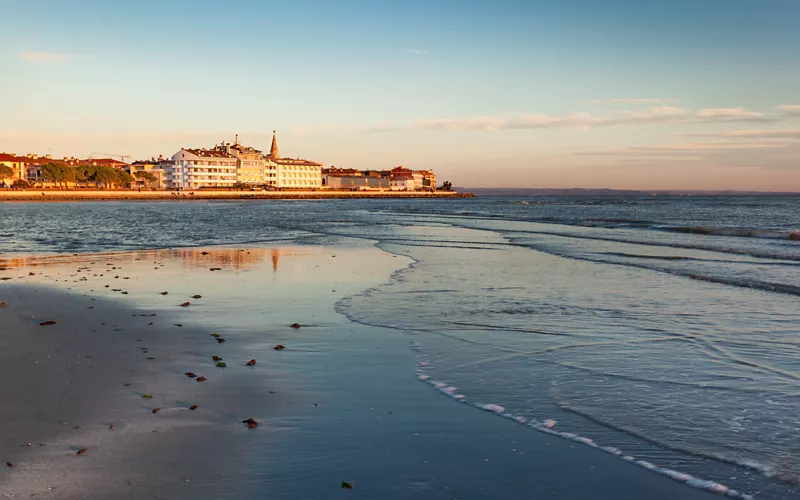
The gentle seabed, the width of the beaches of fine sand with their many therapeutic properties and exposed to the sun all day long, the mild climate and the ionised air attract here above all a family type of tourism, in search of organised and protected facilities, but also droves of young people attracted by the many open-air activities that the area's resources encourage, from cycling to windsurfing, from kite surfing to golf, from sailing to trekking, as well as very lively nightlife without excess.
Above all, it is the extraordinary variety of bathing facilities designed to meet the needs of all types of users, with an articulated range of services and offerings, from the exclusive and prestigious lido to the family lido, from the establishment associated with spa treatments and heliotherapy, to the one that is also pet-friendly for those travelling with a four-legged friend.
The glorious echo of imperial splendour
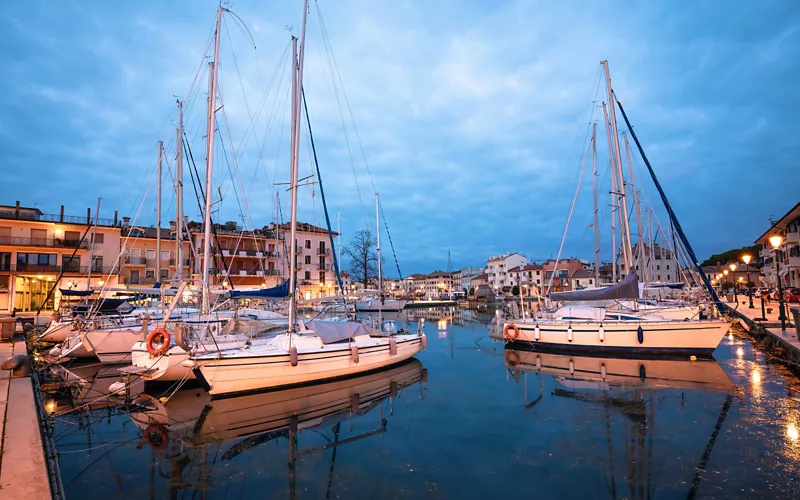
Grado boasts a centuries-old vocation for hospitality. Kick-starting a tourist tradition destined to last to this day, on 25 June 1892 Austro-Hungarian Emperor Franz Joseph proclaimed Grado a “health resort”. From the late 19th century and for many decades, the small lagoon town, once a fishing village, was the favourite tourist destination of the Danube upper middle class and the nobility of the Habsburg Empire, who frequented the island in order to breathe in the “maritime vapours” and benefit from the sophisticated sea spa.
For a long time, the island was the most fashionable seaside resort in Austria-Hungary and perhaps that is why even today, 130 years later, its beautiful beaches and airy architecture retain the atmosphere of that glorious, somewhat timeless era.
The sea and the sun (even total) on the skin
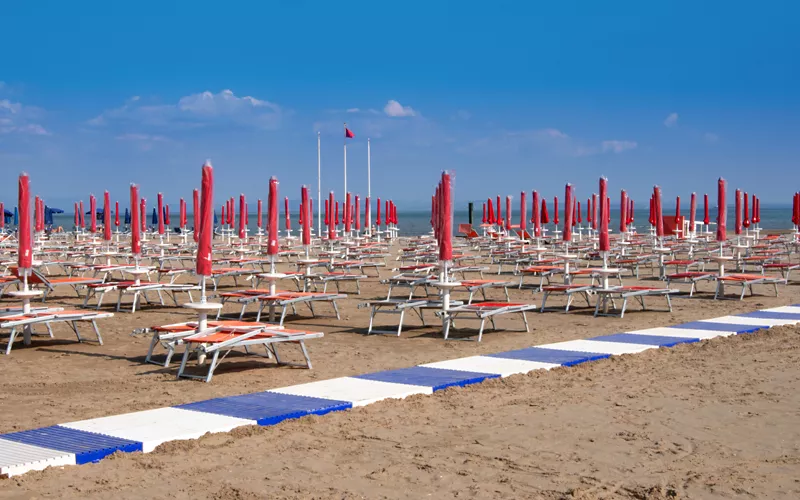
It certainly was not Emperor Franz Joseph who discovered that the sea is a powerful health ally: therapies based on the healing action of the sea climate, the sea and its products (sand, seaweed, mud) were already used by the ancient Greeks.
Being an island, Grado has simply been able to make the most of and combine the beneficial effects of sun, iodine and salt water within the facilities of its famous Marine Spa, which is now complemented by a wellness centre, fitness centre, Finnish sauna, Turkish bath and thermal pool.
It also seems that, thanks to the combined action of a series of natural factors such as the southern exposure and the very pure microclimate generated by the thick vegetation behind the foreshore, there is a very fine dusting in the atmosphere of the Grado beach that acts as a natural filter and increases the ability to tan without damaging the skin: an entire establishment, the Solarium, is dedicated to heliotherapy, allowing its customers to sunbathe in the nude, in a structure with separate changing rooms, protected by privacy and discretion.
The hinterland on two wheels: up to Salzburg!
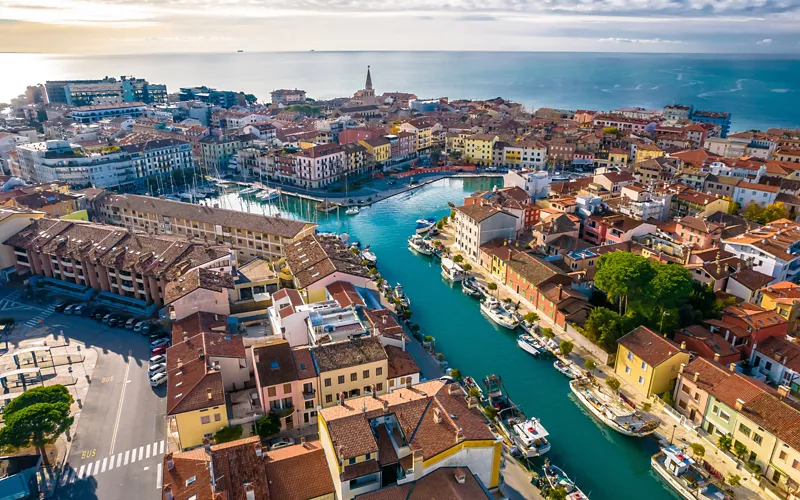
For those who can resist the eternal fascination of the sea, Grado is also an area to be discovered by bicycle, a true paradise for two-wheelers. Its 40 kilometres of cycle paths, thanks to which the Friulian city was awarded 5 Bike Smiles by the Italian Federation of Friends of the Bicycle, allow cyclists to comfortably tour the city centre, but also to venture inland to the two UNESCO-protected cities of Aquileia and Palmanova or to the nature reserves of Valle Cavanata and Foce dell'Isonzo-Isola della Cona.
For those with legs and lungs, the island is located at the end of the great Alpe Adria cycle route, 425-kilometres running partly along the route of an old, disused railway line, through mountainous, hilly and lagoon landscapes, taking cyclists from Grado to Salzburg in a week.

